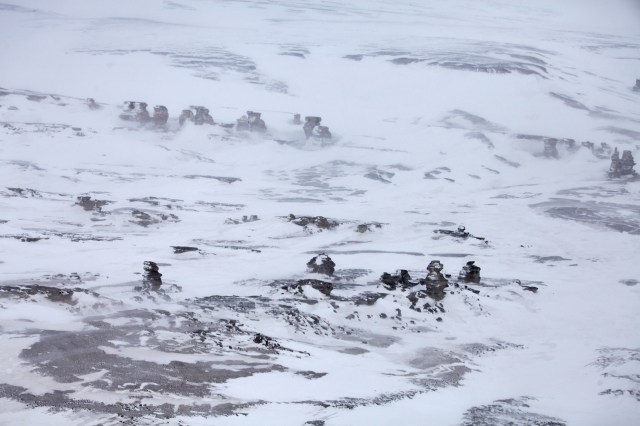
SCIENTISTS CONCERNED BY OBSERVATIONS MADE ON AND UNDER THAWING PERMAFROST — HOW MELTING ICE COULD CAUSE PUBLIC HEALTH PROBLEMS
Earth’s rising temperature is not just causing ice glaciers to melt. It is also affecting entire land masses that typically have ground that remains completely frozen called permafrost. In Siberia, this permafrost is now melting at extremely alarming rates, causing concern for the environment and public health.
What’s happening?
Nikita Zimov, a scientist at the Pleistocene Park, has been observing the thawing of Siberia’s permafrost. The permafrost, which covers about two-thirds of Russia, is thawing at a rate approximately two times as fast as the global average.
As the ice melts, it reveals ancient wildlife and vegetation and releases harmful gasses and diseases. In a recent discovery, scientists were able to revive a 46,000-year-old worm that had been trapped in the permafrost.
Why is melting permafrost concerning?
The thawing of Siberia’s permafrost has far-reaching implications for both the environment and human communities. Permafrost acts like a giant freezer for a lot of organic matter, which includes dead plants and animals.
When it thaws, this organic matter can decompose and release potent gasses that contribute to the planet’s overheating. This process not only accelerates the effects of this overheating but also poses immediate threats to the infrastructure and livelihoods in the region.
Additionally, researchers have discovered that Arctic permafrost contains high levels of mercury, a toxic heavy metal.
When permafrost melts, this mercury can be released and converted into methylmercury by certain microbes. Methylmercury is very harmful and can work its way up the food chain, potentially impacting wildlife and human health, especially in regions where people rely on fish as a staple part of their diet.
In addition to toxic polluting gasses and mercury, there’s also the worry about ancient viruses, which have been dormant in the permafrost, potentially being released. Although the likelihood of these viruses causing pandemics is considered low, it’s a risk that scientists are taking seriously.
What’s being done about melting permafrost?
Despite the daunting challenges posed by melting permafrost, efforts are underway to mitigate its impacts and address the underlying causes. Scientists like Zimov are leading initiatives, such as Pleistocene Park, aimed at rewilding the Arctic tundra to restore ecological balance and promote natural processes that help stabilize the permafrost.
“The goal of our work is to create a self-sustaining system,” Zimov said. He hopes that the park will be able to sustain itself with no human interference in the next 25 years. “Maybe yes, it is too hard of a task. But that doesn’t mean we shouldn’t be trying.”
Join our free newsletter for weekly updates on the coolest innovations improving our lives and saving our planet.Scientists concerned by observations made on and under thawing permafrost — how melting ice could cause public health problems first appeared on The Cool Down.
2024-02-27T23:15:01Z dg43tfdfdgfd